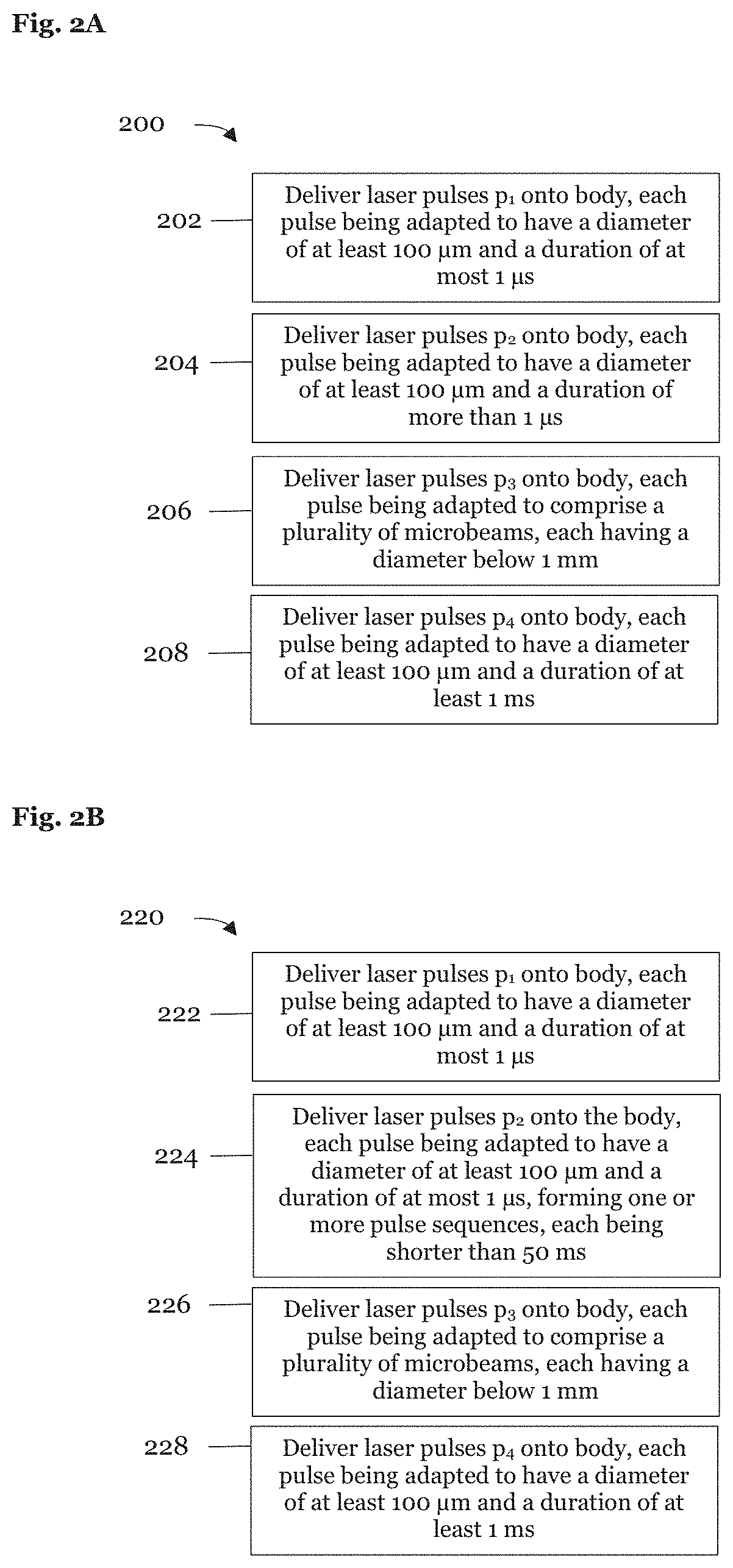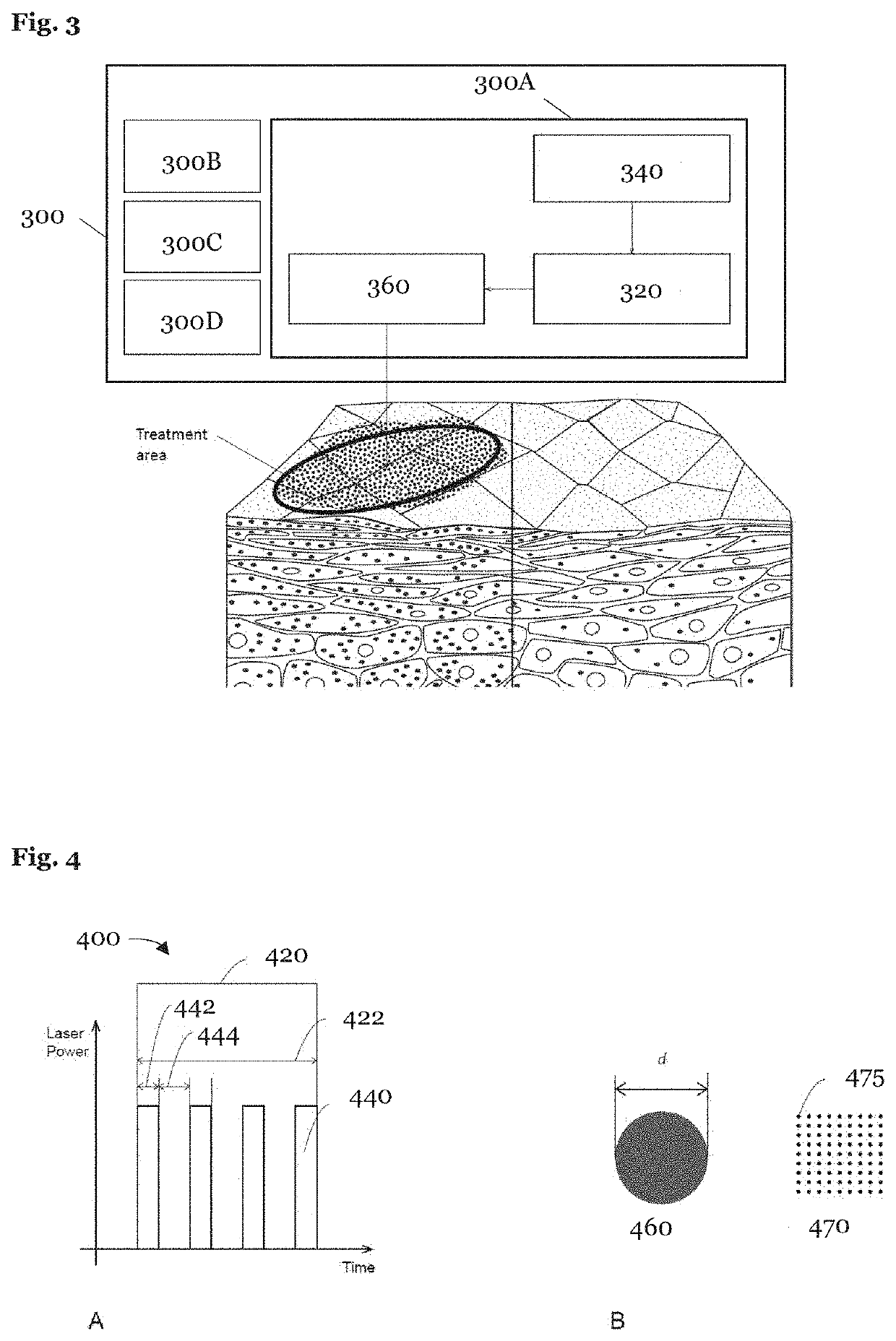Using laser light for treating melasma and related hyperpigmentation disorders
a technology of hyperpigmentation and laser light, which is applied in the field of treatment of melasma and/or related hyperpigmentation disorders, can solve the problems of difficult treatment of pigment accumulation disorders, limited success rates, and prolonged application of drugs, and achieves simple and cost-effective effects
- Summary
- Abstract
- Description
- Claims
- Application Information
AI Technical Summary
Benefits of technology
Problems solved by technology
Method used
Image
Examples
Embodiment Construction
[0054]FIG. 1 shows in a schematic cross-sectional view a hyperpigmented skin portion 11 (left side) and a normally pigmented skin portion 102 (right side). Skin portion 101 comprises a hyperpigmented area no. Typically, this is a more strongly coloured area on the surface, indicating a higher concentration of melanin in the skin below that area. Typically, the treatment area onto which the laser pulses described herein are applied covers hyperpigmented area no.
[0055]Hyperpigmented area no comprises a top epidermal layer, a lower dermis, and a dermis-epidermis junction in between. Undesired pigments are typically created by melanocytes 120 and transferred to keratinocytes 130 and are mainly located in the epidermis. Unwanted pigments can also be present in the dermis, e.g., inside melanophages 140, which are macrophages that have engulfed melanin by phagocytosis of either senescent cells or leaked melanosomes 180. In the dermis, hyperproliferation of blood vessels is also common in c...
PUM
 Login to View More
Login to View More Abstract
Description
Claims
Application Information
 Login to View More
Login to View More - R&D
- Intellectual Property
- Life Sciences
- Materials
- Tech Scout
- Unparalleled Data Quality
- Higher Quality Content
- 60% Fewer Hallucinations
Browse by: Latest US Patents, China's latest patents, Technical Efficacy Thesaurus, Application Domain, Technology Topic, Popular Technical Reports.
© 2025 PatSnap. All rights reserved.Legal|Privacy policy|Modern Slavery Act Transparency Statement|Sitemap|About US| Contact US: help@patsnap.com



